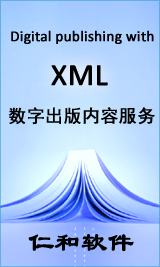黄兴友
,
胡汉峰
,
夏俊荣
,
卜令兵
,
张雪芬
,
雷勇
,
黄建松
,
王巍巍
,
吴迪
,
蒋昌华
量子电子学报
doi:10.3969/j.issn.1007-5461.2013.01.013
为了比较几种自动化测云仪器的性能,中国气象局气象探测中心在南京信息工程大学的气象探测基地首次组织了一次为期近5个月的比对试验,试验仪器包括四台激光云高仪、两部红外测云仪、一台全天空成像仪以及一部毫米波云雷达.对其中大部分仪器取得的三个月云底高度数据进行了初步分析,结果表明:三台激光云高仪测量结果比较一致;两部红外测云仪在测量低云时一致性稍差;云雷达与激光云高仪测量的最低层云底高度数据一致性较差,但与红外测云仪的测量结果匹配较好.
关键词:
大气光学
,
云底高
,
激光云高仪
,
红外测云仪
,
云雷达
何鹏
,
张俊
,
严定鎏
中国冶金
doi:10.13228/j.boyuan.issn1006-9356.20160096
为了合理利用云铜渣,采用ITmk3工艺获得高质量粒铁,在实验室条件下进行了一系列的基础研究.通过比较试样全铁质量和熔分得到的粒铁质量,得到了金属铁的收得率,结合化学分析方法,分别得到了试样还原后的金属化率以及熔分后金属铁中的碳质量分数,研究了各个因素对以上指标的影响规律,形成了对云铜渣合理还原熔分的工艺路线,得到如下结论:渣熔化是形成粒铁的必要条件,铁的聚合程度取决于渣铁分离熔化之前铁的渗碳质量分数.渣中SiO2的存在是渣相低熔点的根本原因,碱度改变时云铜渣的熔化区间会发生变化,但对熔化开始温度的影响不显著.当碱度大于0.4后,添加CaO能显著地提高云铜渣的还原性能.
关键词:
铜渣
,
还原熔分
,
渗碳
,
粒铁
周科平
,
林允
,
邓红卫
,
李杰林
,
刘传举
中国有色金属学报(英文版)
doi:10.1016/S1003-6326(16)64313-3
采用熵权法和云模型判定岩爆等级。选用岩石的单轴抗压强度σc、单轴抗拉强度σt、切向应力σθ、岩石的压拉比σc/σt、岩石的应力系数σθ/σc和岩石的弹性变形指数Wet作为岩爆等级判定的因素建立岩爆评价指标体系。以收集到209组工程中的实际岩爆情况及数据作为样本进行分析计算,建立岩爆等级判定的熵权?云模型。运用该分析模型分析岩爆评价指标体系中评价指标的敏感性,并对收集到的工程实例岩爆情况进行判定,将结果与 Bayes、KNN 和随机森林方法的判定结果进行比较。研究表明:评价指标体系中指标敏感性由大到小的顺序为:sq/sc、sq、Wet、sc/st、st、sc;熵权?云模型的判别准确率比Bayes、K最邻近结点算法(KNN)和随机森林(RF)方法高。
关键词:
岩爆
,
预测
,
云模型
,
熵权
,
敏感性
郝秀霞
,
胡大超
连铸
doi:10.13228/j.boyuan.issn1005-4006.20140031
在对连铸坯质量现状及导致铸坯质量问题因素分析的基础上,将“云制造”的概念引入连铸坯质量控制中,提出了将连铸过程中影响铸坯质量的工艺参数、条件进行综合、优化,实现虚拟对现实的映射的方法,并对连铸坯质量控制的云制造技术平台体系构建等进行探讨.连铸坯质量控制的云制造技术平台是一种新的理念,实现云制造对连铸质量进行控制,可以资源共享,降低铸坯质量缺陷率,减少生产成本.
关键词:
云制造
,
连铸
,
铸坯
,
质量问题
张鸿凌
,
宋耀祖
,
张香春
工程热物理学报
本文研究了一种能测量微细尺度流体温度场的激光云纹技术.激光云纹法利用莫尔条纹的位移量或者位相变化来计算光线穿过位相物体时产生的偏转角,并由此获得流体的温度梯度和温度场分布.激光云纹技术具有灵敏度高,空间分辨率高,稳定性好,实时观测等优点.本文介绍了激光云纹法的测量原理、实验技术,并利用该方法测量了加热细丝自然对流的微细尺度温度场分布.
关键词:
微尺度传热
,
温度测量
,
流场显示
,
激光云纹
,
傅立叶变换
马文来
,
张伟
,
管公顺
,
庞宝君
材料科学与工艺
doi:10.3969/j.issn.1005-0299.2005.03.021
低地球轨道的各类航天器易受到微流星体及空间碎片的超高速撞击.本文采用AUTODYN软件进行了椭球弹丸超高速正撞击及斜撞击防护屏碎片云的数值模拟.给出了三维模拟的结果.研究了在相同质量的条件下,不同长径比椭球弹丸以不同速度和入射角撞击防护屏所产生碎片云的特性,并与球形弹丸撞击所应产生的碎片云特性进行了比较.结果表明:在相同的速度下,不同长径比椭球弹丸撞击的碎片云形状、质量分布和破碎程度是不同的,随撞击入射角的增加弹丸的破碎程度增大,滑弹碎片云的数量增加;随撞击速度的增加,弹丸的破碎程度也增加.
关键词:
空间碎片
,
超高速撞击
,
碎片
,
数值模拟
,
椭球弹丸
张鸿凌
,
宋耀祖
工程热物理学报
本文提出了一种可用于微细尺度流体温度测量的激光云纹技术.它利用光线穿过两个等节距的光栅产生莫尔条纹的原理,由莫尔条纹的位移量来计算光线穿过热流体时产生的偏转角,从而获得流体的温度场分布.激光云纹技术具有灵敏度高,稳定性好,空间分辨率高等一系列优点,为微尺度传热的实验研究提供了测试方法.本文详细阐述了激光云纹技术的光学原理、实验装置及其所获得的实验结果.
关键词:
云纹偏折法
,
微尺度
,
流场显示
,
温度测量
常运
,
杜玉红
,
焉台郎
,
赵地
,
李兴
液晶与显示
doi:10.3788/YJYXS20163110.0998
为了实现校园的安全监控,提出了基于云台摄像机的快速移动人群的检测与跟踪算法。介绍了云台摄像机用于校园安全监控的基本构成。为了更好地实现云台摄像头对于移动人群的检测与跟踪,建立了基于现实的精确摄像机模型,提出了摄像机自旋转角度约束的摄像机模型。通过最新的核相关滤波器跟踪算法(KCF)实现对运动着的人群检测与跟踪。运用 Matlab 仿真实验比较该方法和卡尔曼滤波跟踪算法,选择最优方法和相关滤波器跟踪算法来实现检测与跟踪要求。结果表明:相比较于传统的卡尔曼滤波跟踪算法,KFC 算法的跟踪精度优于传统方法,精度多数情况下能达到90%以上,高于卡尔曼滤波跟踪算法的60%,检测与跟踪效果达到要求。
关键词:
云台摄像机
,
精确模型
,
目标检测与跟踪
,
核相关滤波器算法
苏琳琳
,
关桂霞
,
赵海盟
,
谭翔
,
徐振亮
,
吕书强
,
马蔼乃
,
晏磊
影像科学与光化学
doi:10.7517/j.issn.1674-0475.2016.01.059
针对当前地震云研究中只能利用长期以来的经验进行目视解译,无法形成系统的研究理论和研究模型的现状,结合目前流行的Android便携式设备,提出在Android平台上对地震云图像进行轮廓提取与匹配的研究思路.采用抗噪性能较好的数学形态学算法,在此基础上得到一种改进算法以提取出感兴趣区域,进而通过构造10个新的不变矩对Hu矩匹配算法进行改进,进行轮廓匹配,识别出地震云图像.在Android平台上则利用NDK(Native Delelopment Kit)通过JNI(Java Native Interface)调用OpenCV库函数,用C++语言实现改进算法.实验结果表明:该方法能够有效地识别时间序列下的地震云,正确率高,并且在Android平台上操作简单方便,为地震云预测地震提供初步研究基础和研究依据.
关键词:
地震云
,
轮廓提取
,
轮廓匹配
,
数学形态学
,
Hu矩
,
Android






